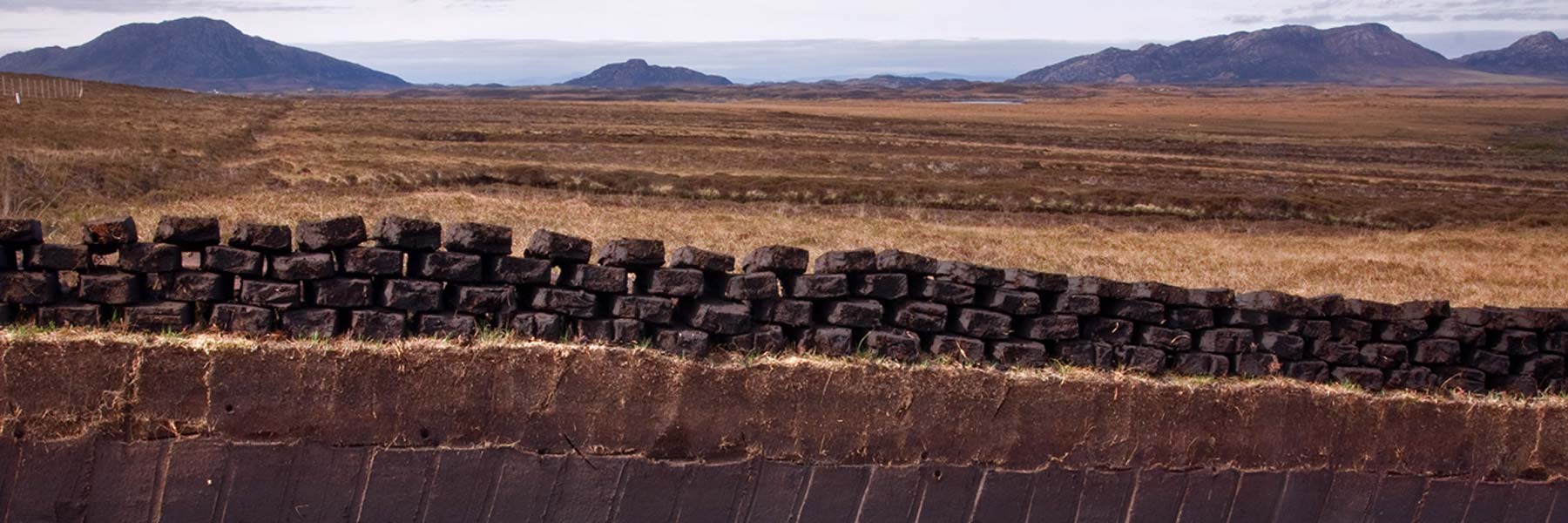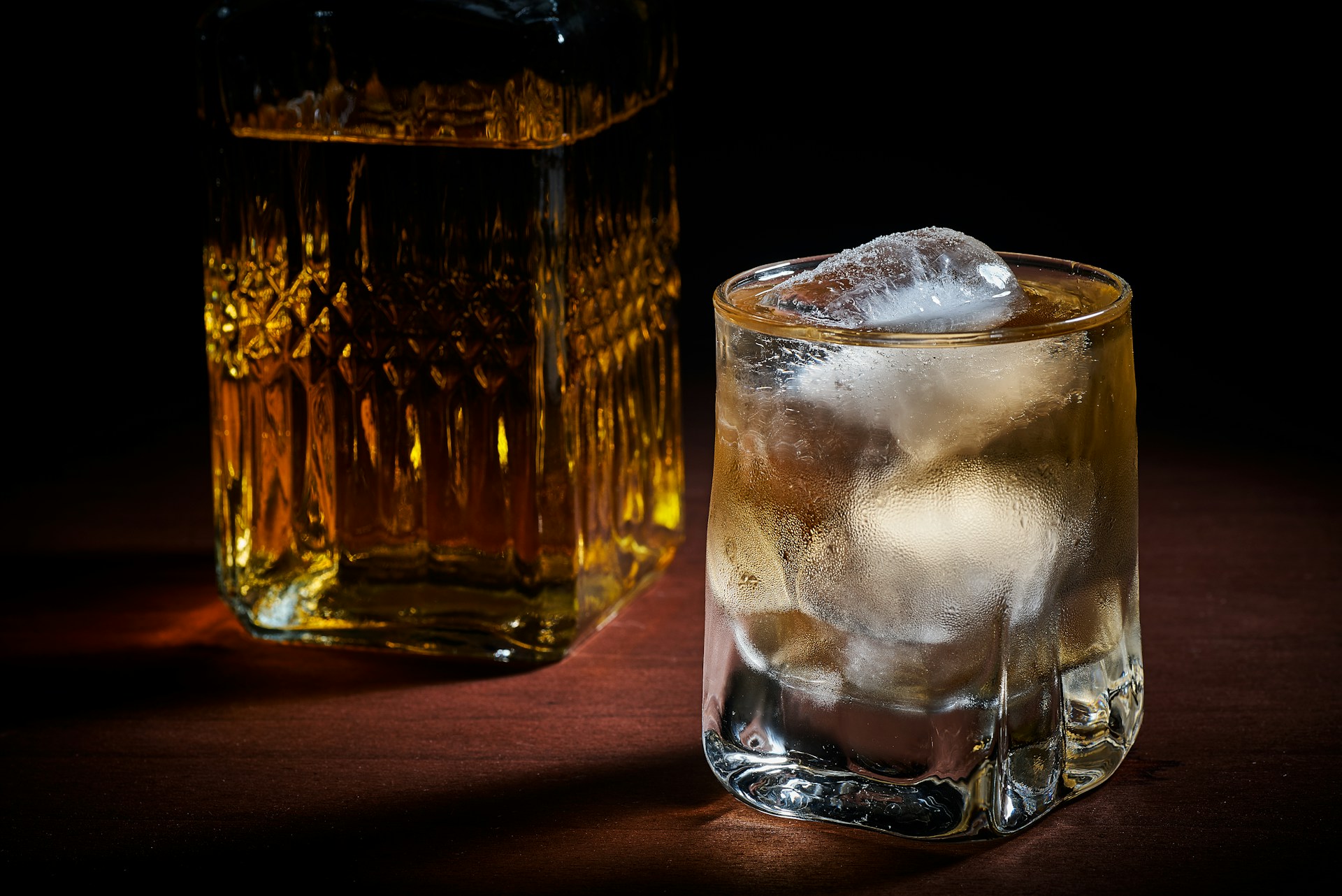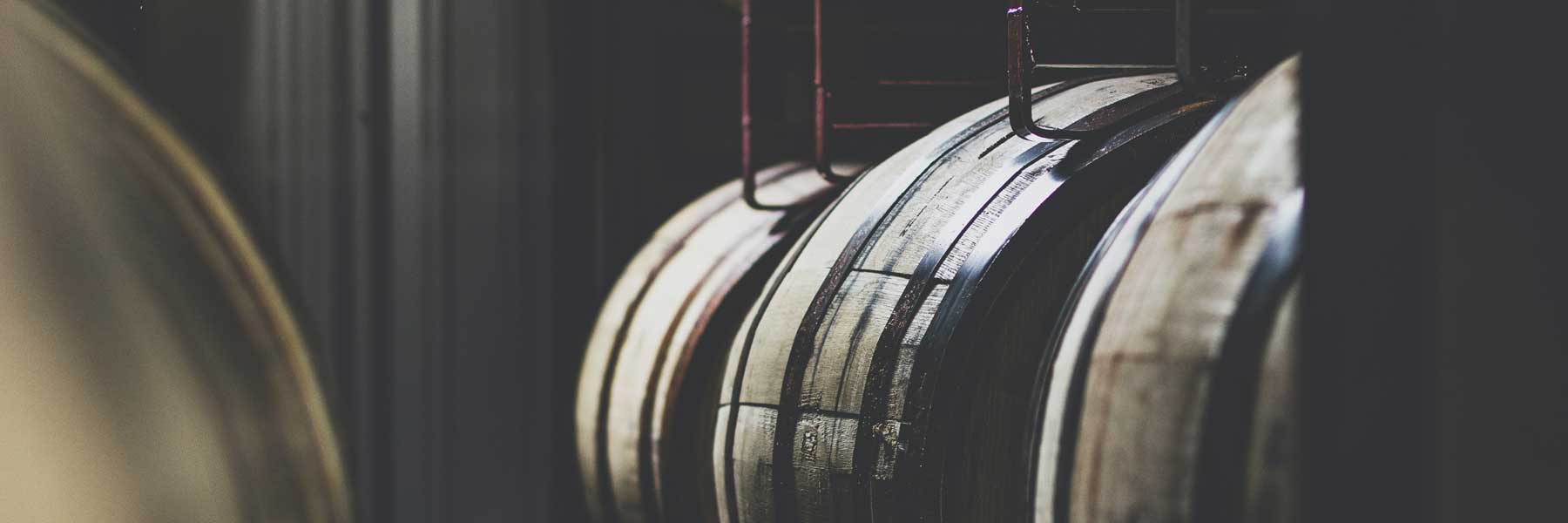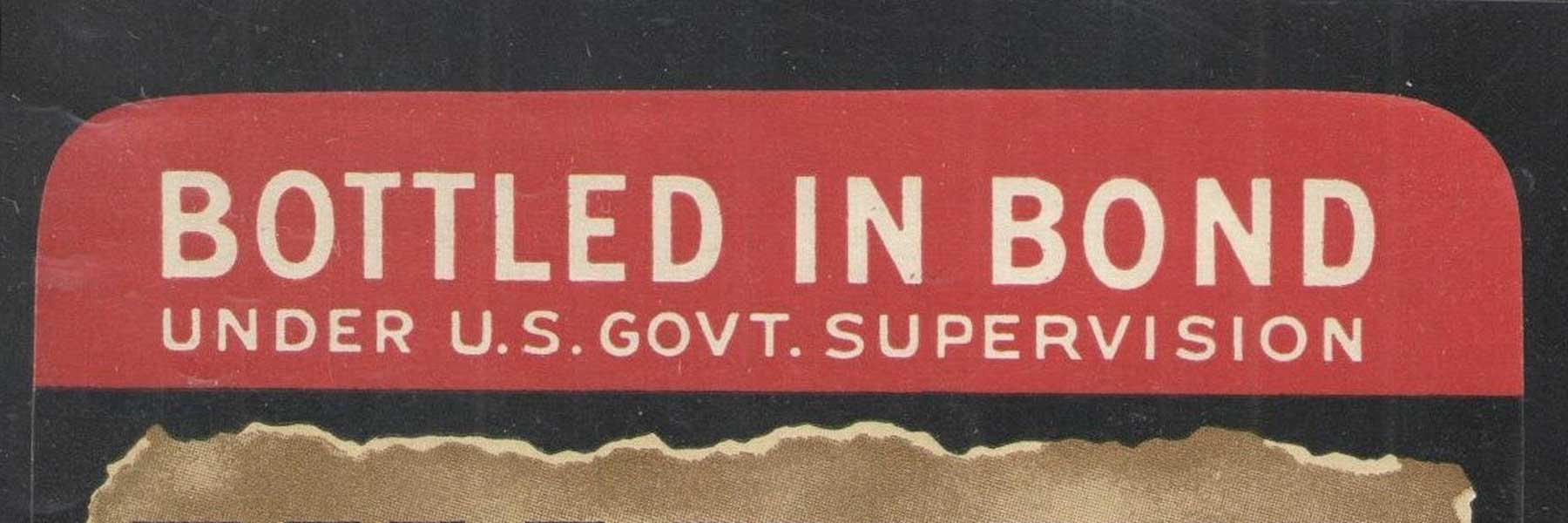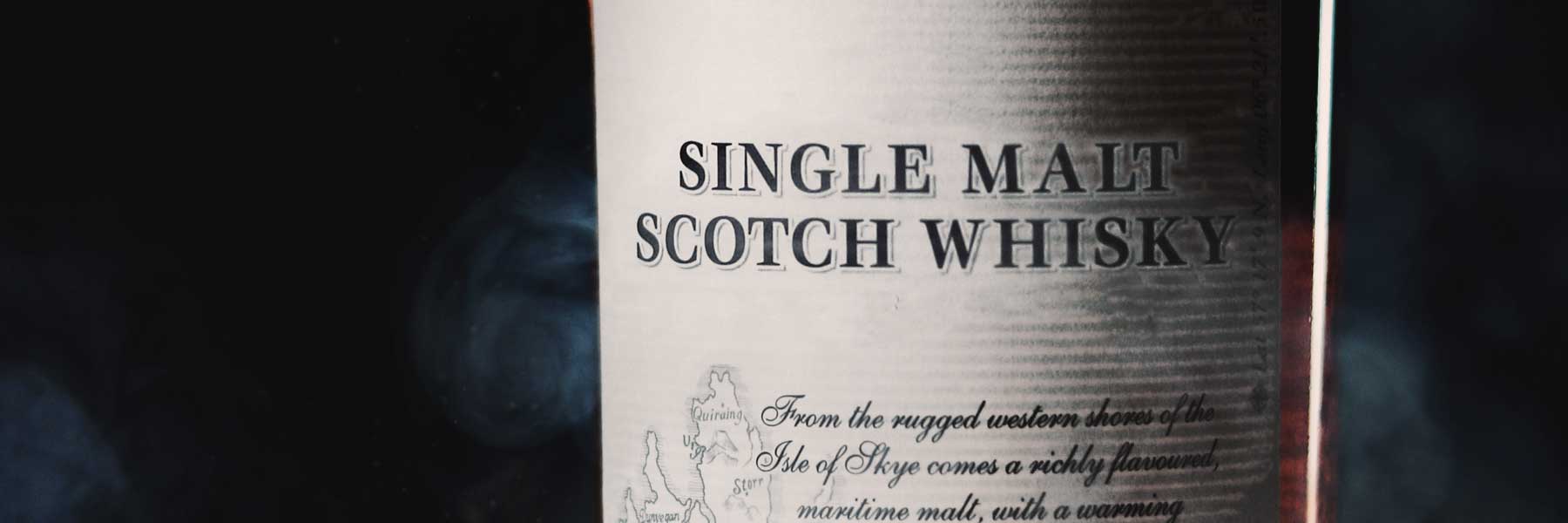What is peated whisky?
Peated whisky is made with malted barley which has been steeped in water and then dried via a peat fire beneath. Peat (a dense bog soil) is burned to create the fire which imparts a characteristic and smoky flavour via aromatic hydrocarbons. Peated whiskies are typically produced in Scotland, Ireland and Japan however other regions are known to use peat in their malting process too.
The intensity can sometimes resemble a specific type of cigar, rich and heavy on the tongue. Much like a vintage cigar’s deep notes, the whisky unfolds layers of nuanced smokiness.
The peatyness or smokiness depends on the malted barley’s duration of exposure as well as the type of peat burned in the kiln beneath.
In this blog post, you will learn everything you need to know about peated whisky. What it is, how it’s made, what smoky and peaty whisky tastes like and more.
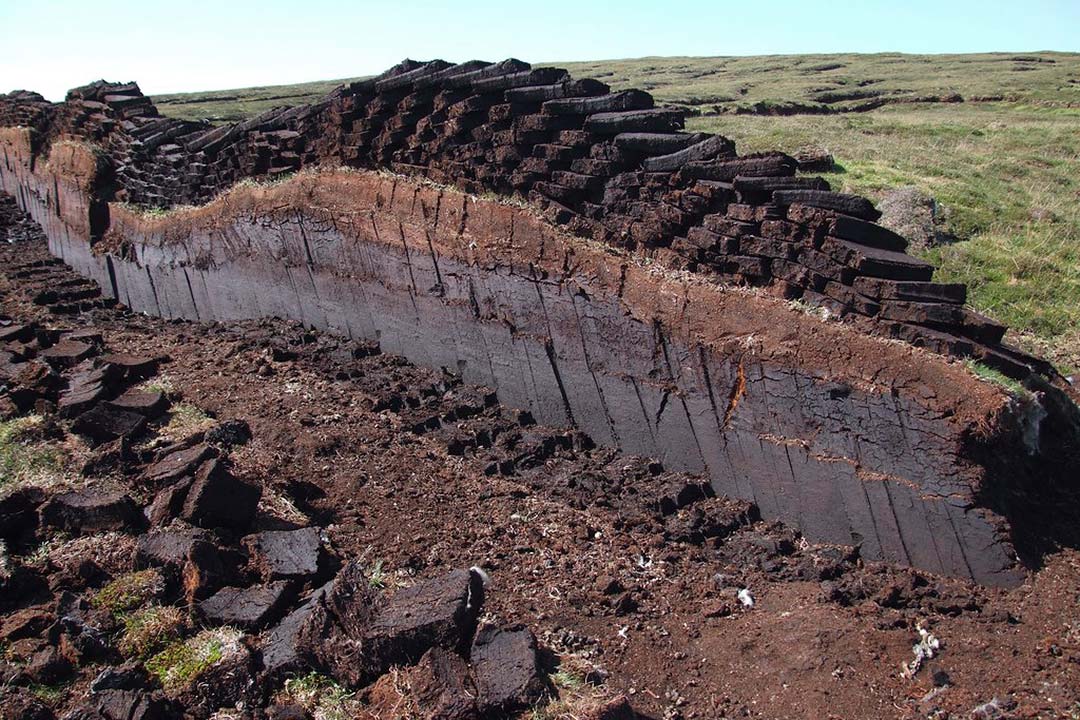
What is peat?
Peat is an earthy matter formed by partially decomposed vegetation in the waterlogged and often acidic conditions of moors and bogs. Plentiful, dense and naturally occurring, peat was and still is traditionally cut from bogland, stacked and then dried for use as fuel for burning.
Today, peat is still used as a fuel source and is commercially harvested via machines and burned for heat or electrical energy. Despite its age, peat isn’t technically a fossil fuel as it isn’t fossilised, however, it has even higher C02 emissions than burning coal.
Where does peat come from?
Peat is most abundant in the northern hemisphere, usually occurring in boggy marshlands across northern Europe and North America. It can be found in many parts of the world, but in the context of whisky, the majority of the UK’s peatlands are in parts of rural Scotland, on the islands, in the highlands and western mainland. Historically, it was used as one of the few locally available fuel sources for making fire.
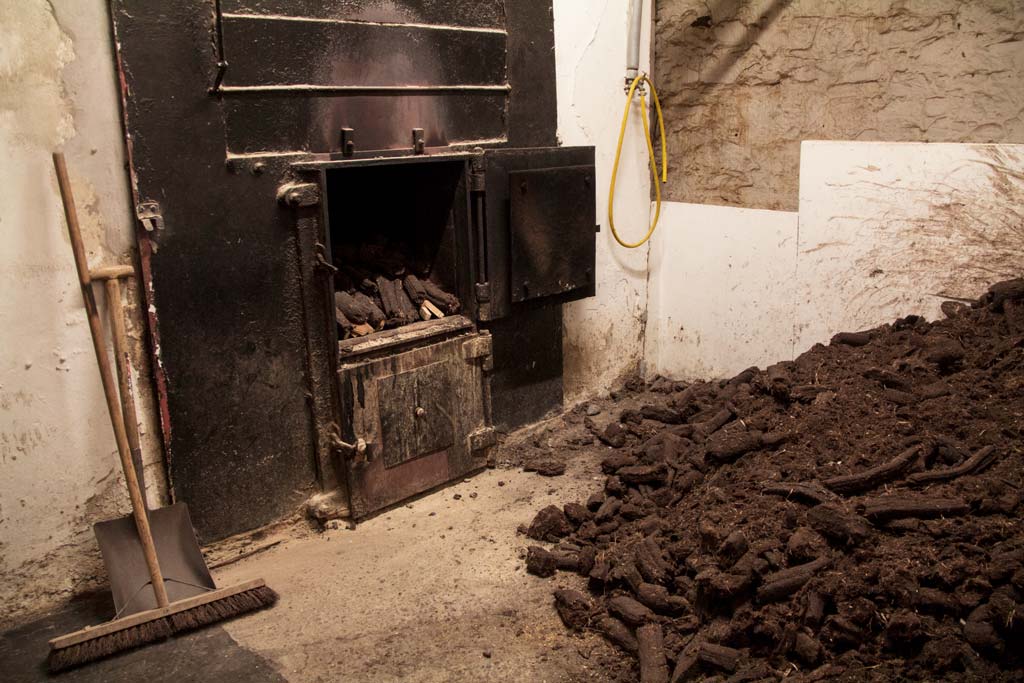
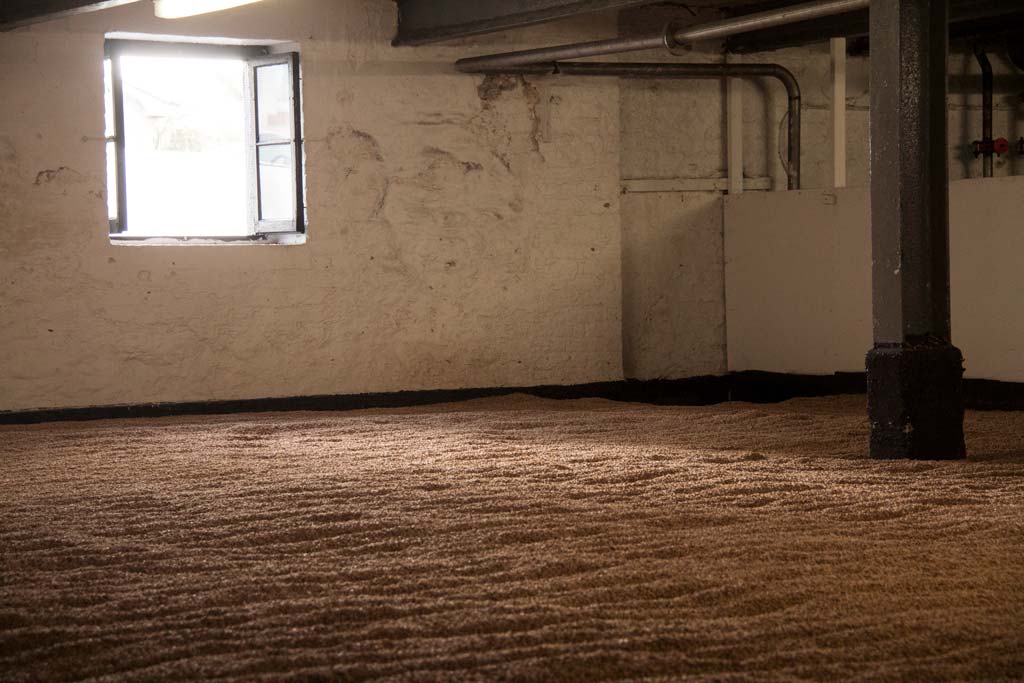
How is peat used to make whisky?
To make peated whisky, locally cut peat briquettes are stacked inside a kiln. They’re then burned to create heat and smoke which rises upwards through a perforated floor and then through a thin bed of malted grain above.
As the smoke fills the room, it permeates the grain imbuing peaty and smoky flavours. This is what gives the whisky its peaty, medicinal tasting notes which often differentiate particular distilleries and their range of spirits. Secondarily, heat from the kiln below halts the germination process of the damp barley by drying it.
In traditional Scottish and Irish whisky making, peat was originally burned to heat small pot stills and to dry wet (malted) grain. Today, peat is usually only used by certain distilleries for flavouring and drying the grain in their peated whiskies. (Not all distilleries use peat to make whisky.)
Interestingly, the Laphroaig distillery on Islay is one of only a few distilleries that still use the traditional floor malting process. Furthermore, they use a two-step process where they first ‘peat’ their barley before then drying it to impart its famously characteristic peatiness. In other words, the grain is cold-smoked first, before then being dried with heat.
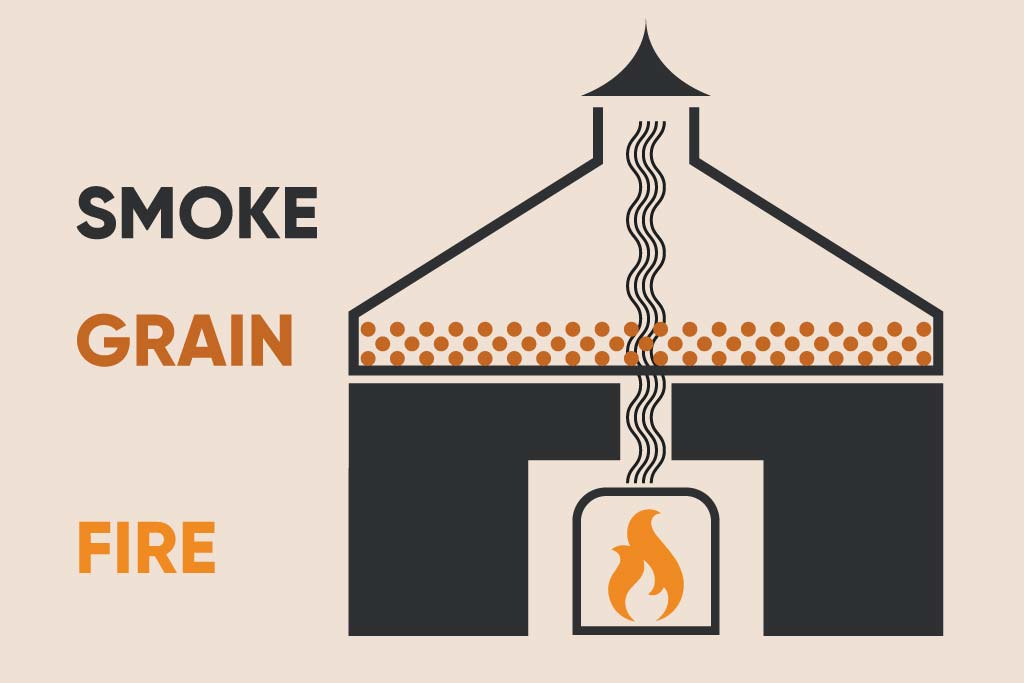
What is whisky PPM?
PPM is an abbreviation for Parts Per Million and is a measure of how much phenol is present in the barley after the kiln drying process. Phenols are a type of compound that contributes to the smoky or peaty flavour of the whisky. The higher the PPM, the more smoky and peaty flavour the whisky has.
Whisky PPM can vary vastly. This depends on the distillery, local water used and of course if peat was used in the kilning. Most whiskies range between 1PPM to 60PPM, however, Bruichladdich of Islay top the PPM chart with their Octomore 08.3 whisky – an outrageous 309PPM.
Generally speaking, whisky with a PPM of 10 or less is considered to have a relatively mild peatiness, while whisky with a PPM of 30 or higher can be quite intense in terms of smoke and peat character.
Different distilleries each have their preferred PPM level to use in whisky making. Some may favour a lower level for a milder taste, while others will opt for higher levels for more of an intense smoky flavour. Peatiness is also affected by the type and amount of peat used as well as the kilning time and temperature.
What is the difference between smoky and peaty?
Smokiness and peatiness offer different smells and tastes within whisky which are often confused or incorrectly interchanged. The main differentiations between smoky and peaty can be distinguished in these three ways.
Peaty vs smoky
On the nose: Smokiness has a fairly evident scent which is easily compared to the burning of wood or coal in a fireplace or even a blown-out candle. Peatiness, however, is much deeper and less obvious on the nose, often emitting earthy smells like wood and other organic plants.
Taste: On the palate, smoky whisky has an immediately ashy taste, likened to cigars or cigarettes. It can be almost like charcoal in the mouth and has an agreeably dry flavour. Once more, peaty whisky is much slower to appear, often earthy, woody, salty and more complex in taste.
Aftertaste: Simply put, smokiness is more of a dry finish whereas peatiness is the opposite, often leaving a lingering moist herbal flavour. Peaty whisky can often be quite bitter in flavour which is often balanced with some element of sweetness, usually from cask finishing in materials such as oak. This harmony of bitter and sweet creates a tremendous flavour profile and is often what makes Islay single malts so widely enjoyed.
What does peated whisky taste like?
Peated whisky can have an array of different flavours depending on its PPM level, type of peat used and kilning process. Tasting notes are often very organic including earthy, woody and herbal flavours. In some instances, peaty whiskies can even be described as having medicinal hints similar to that of THC or iodine. Peaty whiskies are sometimes described as being quite ‘salty’ or like seaweed, which stems from their complex flavour profiles.
As the myth goes, Laphroaig was famously smuggled by ‘bootleggers’ during the 1920’s American prohibition. It’s widely believed that the whisky was so medicinal in its smell and flavour that it could only possibly be used for medical purposes – let alone pleasurably drank.
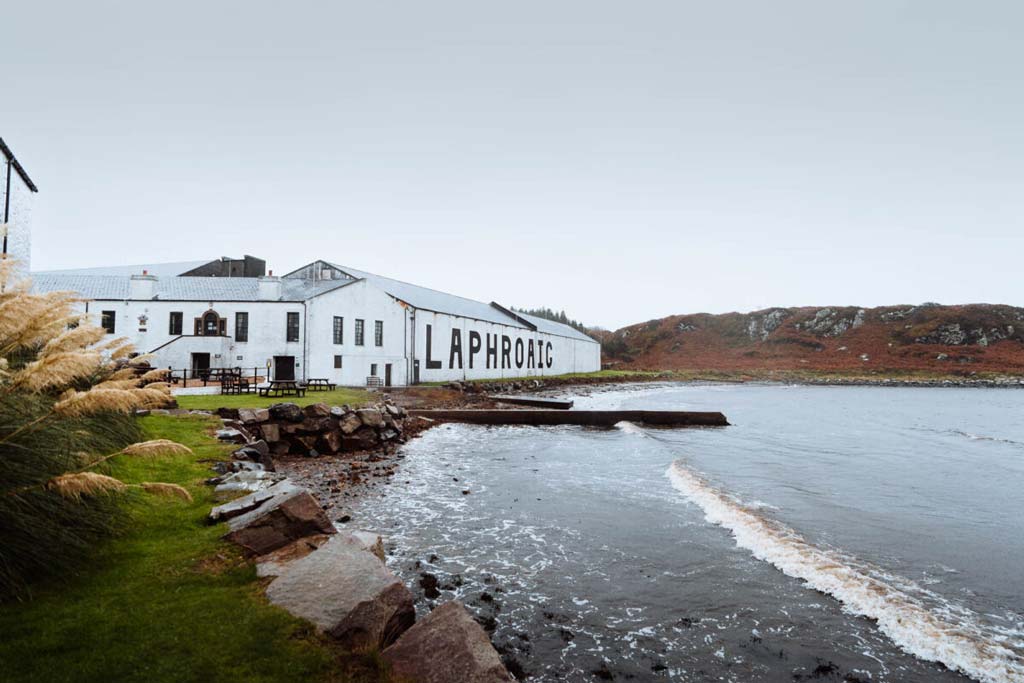
Which distilleries use peat?
Today, the most notable distilleries that regularly use peat are based on the Scottish island of Islay, such as Ardbeg, Caol Ila, Lagavulin, Laphroaig and Bruichladdich. Like many of the inner Hebridean islands, peat plays a prolific part in the local flora and fauna on Islay.
Formatively, peat was one of the few fuel sources in this region. Today, the island still has limited natural gas supplies, hence why peat remains the most commonly used heat source for malting barley in these distilleries.
However, peat isn’t just exclusive to Islay. Other distilleries (islands and highlands) use peat in their whiskies such as Talisker (Skye) or Allt-a-Bhainne Distillery (Speyside).
Peat is also used by some Irish distilleries in their whisky-making process. The most notable examples are Connemara and Bushmills. Peat is used as a way of adding additional flavour to the whisky, and both distilleries have their unique taste that comes from the use of peat.
In more recent times, the Akkeshi and Nikka distilleries of Japan also use peat in their whisky making. Previously, they’d both imported their peat, however they’ve both now sourced their own local peat supplies from nearby bogs.
Peated whisky is less common in distilleries located in Scotland’s Highlands and Speyside regions. This is due to the access to natural gas for kiln drying their malts and sometimes also the lack of peat, especially in the east coat.
See below for a list of peated whisky brands.
The 17 best peated whisky brands

Ardbeg 10 Year Old
The Ardbeg 10-year-old is a fantastic ‘entry-level’ single malt whisky, born in the spiritual home of peated scotch whiskies; Islay. It has a smoky aroma with hints of lemon, lime and pepper. The taste is smoky and Peaty with notes of black pepper, menthol, coal tar and smoked fish. The finish is long and smoky with espresso, aniseed and toasted almonds.
As single malts go, this is a wonderful peated whisky which is easily accessible in terms of price and availability. To grab a bottle, hit the button below.
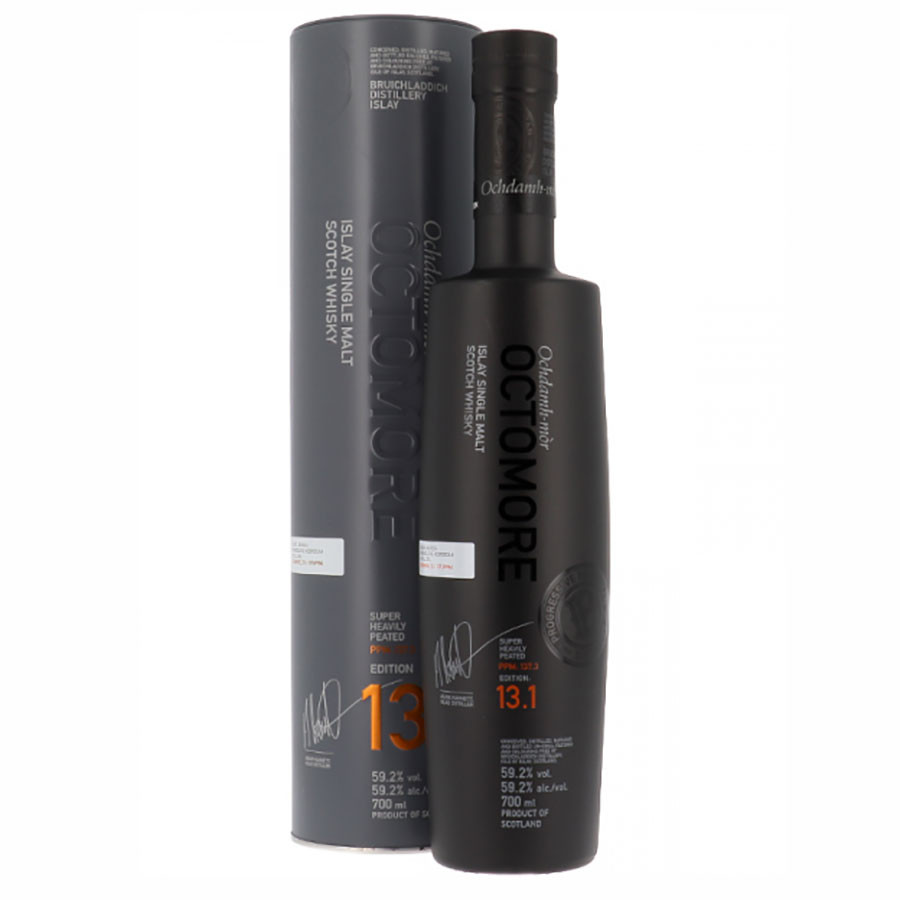
Bruichladdich Octomore Edition 13.1
Distilled in 2016 and peated to 137.3 PPM, the Bruichladdich Octomore Edition 13.1 is one of the peatiest, smokiest whiskies in the world. Local Islay peat is used in the malting process, resulting in a whisky that’s stacked with pungent smoky flavours and aromas. The coveted 13.1 edition has been matured in first-fill American oak ex-bourbon barrels for five years, lending vanilla, coconut and honeyed fruit notes to the intense peat flavour. Best enjoyed with a little water, this whisky is for those who enjoy a robust, smoky dram.

Port Charlotte 10 year old
The Port Charlotte 10 is a peated single malt scotch whisky aimed towards true ‘peat heads’. Complex and sophisticated, this dram is peated to boisterous 40 PPM yielding a smoky and peaty flavour that is both unique and memorable. With a citrine colour, the nose of this whisky is mellow with hints of Islay’s salty marine air. The taste is full-bodied with waves of peat smoke, oak, caramel and vanilla custard. The finish is long and satisfying with notes of honey, lemon meringue and smoked oysters.
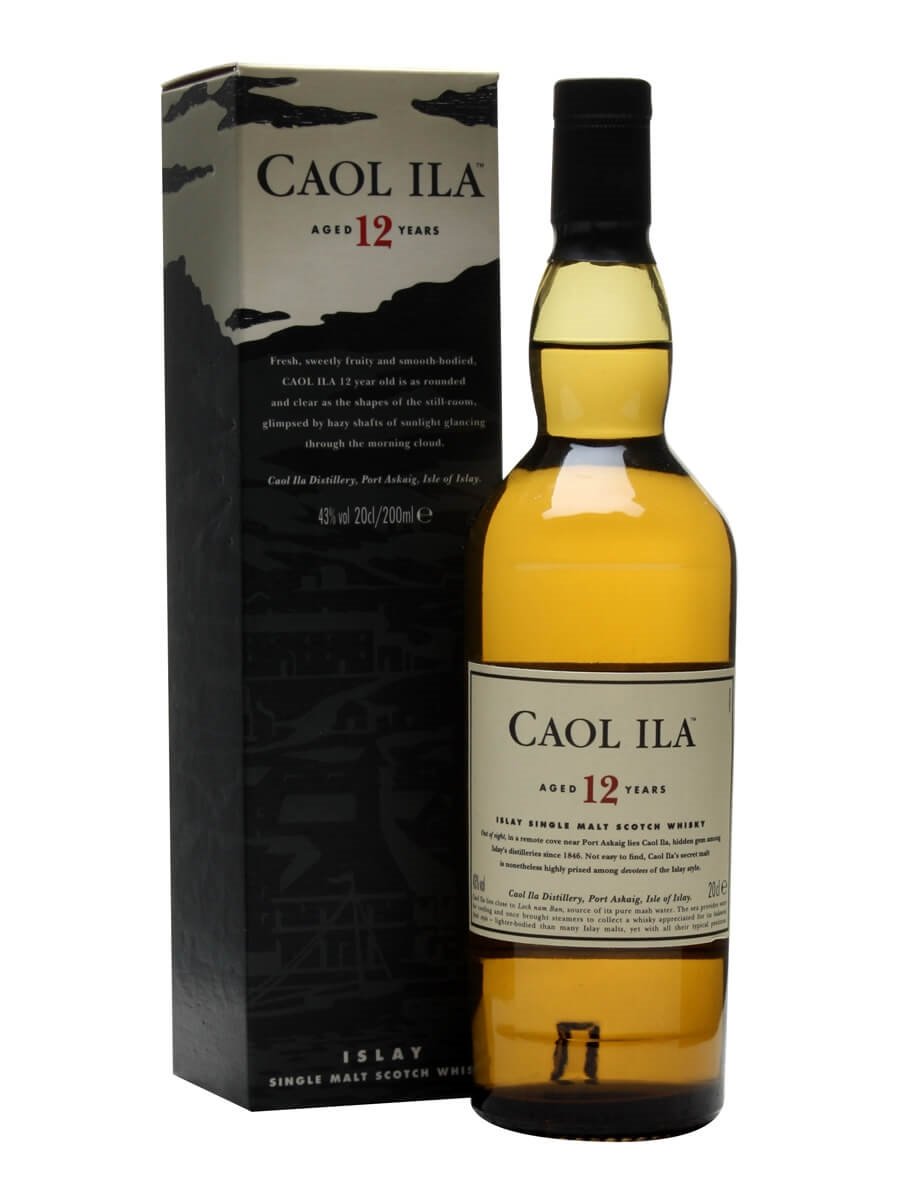
Caol Ila 12 year old
The Caol Ila 12 year old is a peated single malt whisky from the isle of Islay, Scotland. The whisky has a golden amber hue with flashes of copper in the light. On the nose, it has an intense smokiness and sweetness with hints of caramel and toffee with faint notes of smoked bacon and violet.
The taste is rich yet delicate, with notes of peat, malt, spices, toffee, vanilla and pear with a subtle finish of ash, tar and light peat. It finishes long and warm with subtle smokey notes that linger on the tongue. Enjoy this whisky neat or on the rocks for a truly unforgettable experience.

Lagavulin 16 year old
Looking for a whisky that is intense and full of flavour? Look no further than Lagavulin 16 Year Old. This whisky is heavily peated, meaning that it has a smoky taste that is unique and unforgettable. Peat is used in the malting process of making whisky, and this particular distillery is known for its intensely peated whiskies.
The colour of the whisky is a burnished amber. On the nose, you’ll detect strong smoky notes of tobacco, iodine, vanilla and sherry spice. The taste is dry and full-bodied, with a tar-like thickness that will make you savour every single drop. The finish is enduring, marrying spice with dried dark fruits and welcome dashes of pepper.
If you’re looking for a whisky that is full of intense peaty, smoky flavour, Lagavulin 16 Year Old is a perfect choice.

Laphroaig 10 year old
Laphroaig 10 year old is a peated whisky that is distilled the same way today as it was at creation over 200 years ago. Full-bodied and smoky with hints of seaweed and sweetness, this distinctive whisky embodies the Laphroaig house style.
The nose offers a huge smoke, seaweed and medicinal scent with a slight hint of sweetness. Upon tasting, the whisky reveals surprising sweetness with hints of salt and layers of peatiness. The finish is long-lasting and lingers on the palate. This full sparkling gold whisky is best served neat or poured over ice to fully experience its rich flavour profile.
The unique character of Laphroaig 10 year old is derived from the local environment of Islay, an island off the West Coast of Scotland where it’s made. Peaty water sourced from the local Kilbride Stream combines with malted barley that’s cold-smoked and then dried over an Islay peat fire – giving this Scotch whisky its world-renowned smoky, earthy flavour.

Talisker 10 year old
Write a detailed and compelling description for the Talisker 10 Year Old whisky explaining the colour, smell and taste.
The Talisker 10 Year Old Peated Single Malt Scotch Whisky is a rich and powerful whisky that has a distinctly smoky flavour. It is double distilled to create a deep, rich character embodying the maritime characteristics of a coastal whisky.
The whisky is a brilliant golden colour, and on the nose, it has a powerful peat-smoke aroma with just a hint of the sea-water saltiness of fresh oysters and a touch of citrus sweetness. On the palate, it has a rich dried-fruit sweetness combined with clouds of smoke, strong barley malt flavours and an intense peppery sensation that lingers in the back of your mouth.
The finish is extensive, leaving you with a warm peppery taste and a smooth sweetness. A perfect gift for adventurers who share the wild spirit of Talisker’s founders, this whisky will bring you to its rugged maritime home with every sip.
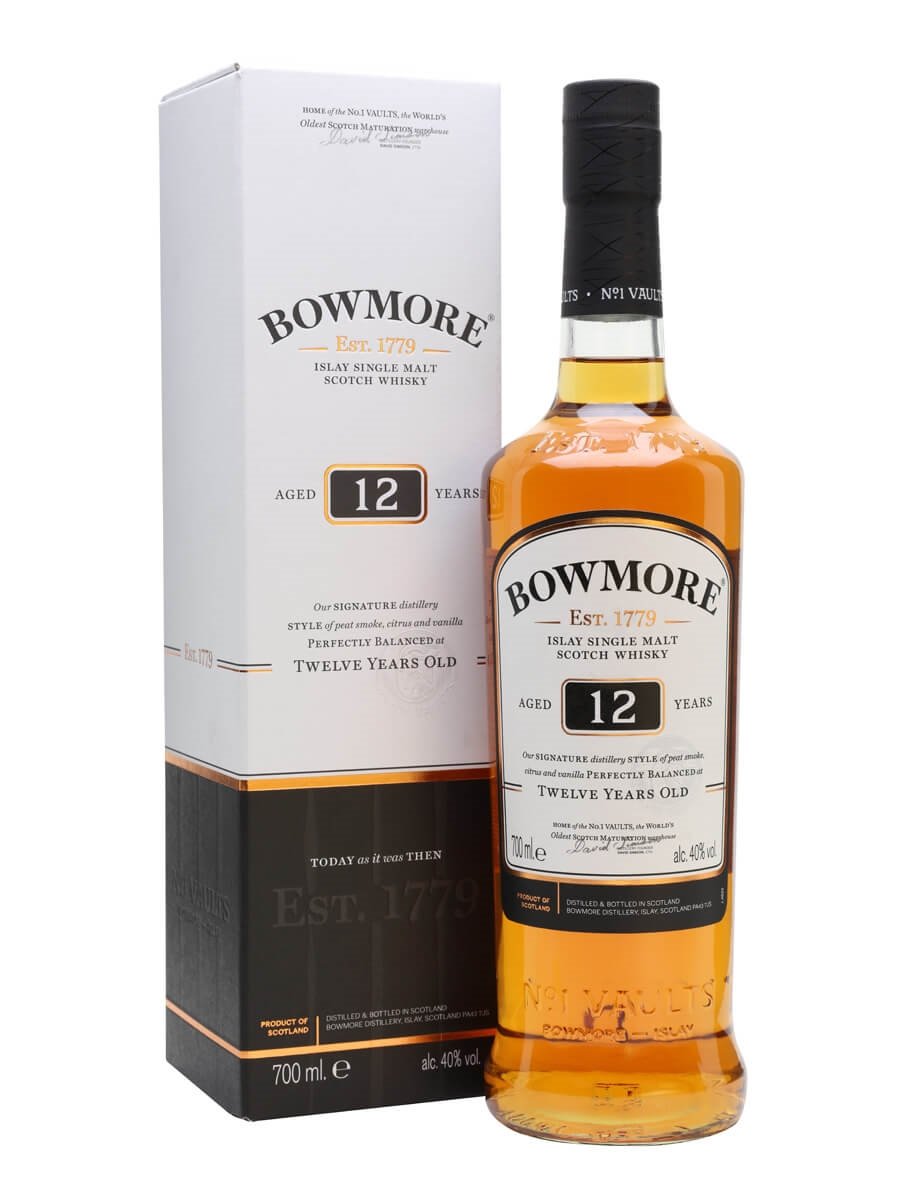
Bowmore 12 year old
The Bowmore 12 year old whisky is a medium-peated single malt that has a warm amber colour. The smell is appetising and combines smoke with caramelised pineapple, accompanied by a heady hit of tropical fruit. The taste is complex and features some lovely smokiness, as well as fruity elements such as pineapple, peach and mango. The finish is soft and relaxing, with a gently fading smokiness.
People who like peated whisky will appreciate the complex smokiness of the Bowmore 12 year old, as well as the fruity elements that complement and contrast the smoke. The balance between these flavours is what makes this whisky so enjoyable as a mildly peated dram.

Isle of Raasay Bordeux Na Sia
Raasay Bordeux Na Sia is a range of limited edition whiskies released in alternating years. It is made from first-fill ex-Bordeaux red wine casks which were delivered fresh to the island from the châteaux of South West France.
The name of this whisky Na Sia means ‘The Six’ in Gaelic. This refers to the recipe consisting of six different casks which are married together to create this range of peated and unpeated whiskies. These casks include first-fill Rye whiskey, fresh Chinkapin oak and first-fill Bordeaux red wine casks.
These casks help the Raasay Bordeux Na Sia develop its distinctive pink hue when first matured in the ex-Bordeaux red wine casks, which then turns into a deeper and darker red colour. It also has bold fruity notes such as dried fruits, sultanas, grapes, Christmas cake and bread pudding.
Peated versions of this whisky are released in alternating years and are bottled at cask strength with limited availability to 288 bottles. Peated whisky lovers will adore this expression with its smoky profile and intense flavours.

Connemara Original
Connemara Original peated single malt whiskey is a unique and exquisite Irish whiskey that is unlike any other. Peated to perfection, this whiskey has a smoky flavour and aroma that is irresistible. It is made with 100% malted barley and distilled in traditional copper pot stills. Connemara is the winner of numerous awards, including the prestigious IWA World Whisky Award for “Best Peated Irish Single Malt.”
On the nose, the Connemara is well-smoked and peaty with heather freshness and floral notes. There are also honeyed sweetness and a little wood present. On the palate, this full-bodied whiskey tastes of malt and peat with honeyed smoke and barley sweetness. The finish is long and pungent, with honey and peat smoke shining through.

Kaiyo Peated Mizunara Oak
Kaiyo peated whisky is made from imported Scottish peated malt. Uniquely, the spirit spends 2 years in Madeira casks, and then 6 years in Mizunara casks.
Kaiyo’s pioneering research into the effect of wood selection on whisky maturation has led to the development of bespoke barrels, crafted from slow-growth, and air-seasoned wood from hand-selected trees. These casks are handmade due to the Mizunara oak’s delicate wood grain.
The Kaiyo Peated Mizunara Oak whisky has a smoky and peaty taste that is smooth to drink. The finish is long and slightly sweet with a touch of smoke. The whisky has a fruity aroma, with notes of orange peel, jasmine and cedar. On the palate, there are earthy coffee and green apple flavours combined with black tea and fresh herbs. There are hints of cinnamon pastries, almonds and tropical fruit that linger in the finish.
The whisky is exceptionally smooth and well-balanced, with an overall complexity that will delight your taste buds. Enjoy this unique spirit neat or over ice for an unforgettable experience.

Glenturret 7 Years Old Peat Smoked
The Glenturret 7 Years Old Peat Smoked is an exquisite whisky that captures the essence of Scotland’s rugged landscape in every sip. On the nose, there are aromas of sweet vanilla and toffee, with undertones of peat smoke. The taste is full-bodied and smooth, with flavours of honey and caramel, contrasted by a subtle smokiness. The peat smoke lingers from the first sip to the last, leaving a pleasant and warming finish.
Its unique combination of rich sweetness and bold smoke offers a complexity like no other, making it a perfect dram for whisky connoisseurs and newcomers alike. Whether enjoyed neat or with a splash of water, this peated whisky will undoubtedly leave you wanting more.

Teeling Blackpitts Peated Single Malt
Finished in both ex-sauternes white wine and then ex-bourbon casks, the Teeling Blackpitts Peated Single Malt has a unique smoky taste that is unlike any other Irish whiskey. The triple distillation process creates a peated single malt with a reduced medicinal character and instead allows the barbeque smoke characteristic to be more distinct.
This peated whisky has a smoky and peaty taste that is smooth to drink. The barbeque smoke and cloves are evident on the nose, while the palate features notes of all spice, honey and grilled pineapple. There is a savoury smoke taste that lingers on the palate after drinking.
If you’re looking for a smoky and peaty whiskey that is unlike any other, then the Teeling Blackpitts Peated Single Malt is a perfect choice. With its unique cask finishing, this dram has a truly unique taste.

Glen Moray Peated Single Malt
Write a detailed and compelling description of the Glen Moray peated single malt whisky explaining the colour, smell, taste and finish.
The Glen Moray Peated Single Malt whisky is an interesting dram that balances smoky intensity with a classic Speyside smoothness. The whisky is made with barley which, unusually for Glen Moray, is dried in a peat-fired kiln, resulting in hints of smoke in the final product. This smoky single malt is aged in American oak casks for undertones of vanilla and oak and reveals a new dimension to Glen Moray.
The whisky has a light gold colour and the nose is full of peaty smokiness, with layers of vanilla, tangy rhubarb and hints of leather. The taste is instant peat smoke, lightly spiced with creamy vanilla tones. The finish is memorably long, with sweet and spicy oak smoke flavours remaining strong all the way to the end.

Paul John Peated Select Cask
John Paul Peated Select Cask is a peaty single malt whisky from India that has been matured in ex-bourbon barrels. It comes bottled at cask strength (a strong 55.5% ABV) and without chill filtration, making it a very pure expression from the award-winning Goa distillery.
With phenolic levels of 30PPM, this whisky has a classic earthy peat note which is balanced with hints of BBQ smoke and sugar. The palate is full of flavour with more BBQ smoke, sugar and earthy, slightly damp vegetal notes. There are also hints of tropical fruit and spice on the taste. The finish is long and bitter orange peel lingers on the palate.
John Paul Peated Select Cask is an underrepresented player in the global whisky market, but this peated edition is certainly one to try if you’re a peaty whisky fan.

Jura Prophecy
The Jura Prophecy whisky is a heavily-peated single malt that is matured in a combination of ex-bourbon and ex-sherry casks. This whisky has a fiery golden amber colour and offers aromas of floral heather, Brazil nuts and salty sea air.
The taste is powerful peat smoke and spicy sea spray open up the palate, followed by flavours of soft liquorice, spicy cinnamon and nutmeg. The Jura Prophecy whisky is non-chill filtered for a huge peaty punch and is aged in Bourbon, sherry and Limousin oak casks.
The ABV of this whisky is 46% and it offers a sweet and spicy finish. Enjoy this smoky, peaty whisky neat or with an ice cube to bring out the flavours even more. This complex and structured whisky is perfect for any occasion, whether you’re having a night in with friends or relaxing after a long day.

Balvenie ‘Week of Peat’
The Balvenie ‘Week of Peat’ whisky is a unique, limited edition expression made during the one week of the year that the distillery uses peated malt. For one week only, the distillery’s barley malt is dried over a peat fire, lending a tremendous smoky flavour to the grain. Resultantly, aromas of sweet peat smoke, butterscotch, delicate flowers and honey fill the nose.
On the palate, these aromas are complemented by notes of oaky vanilla, orange zest, blossom honey, sweet cream and rich, sweet peat smoke throughout. Available in 14 and 17-year-old editions, the ‘Week of Peat’ range is designed to bring to life the tales of ‘character, endeavour and craft’ of those at Balvenie through the generations.
A rare peated expression from the Balvenie distillery in Dufftown (Speyside) this annual bottling would make a great gift for a peated whisky lover who enjoys something a little more unique.
Peated whisky FAQ’s
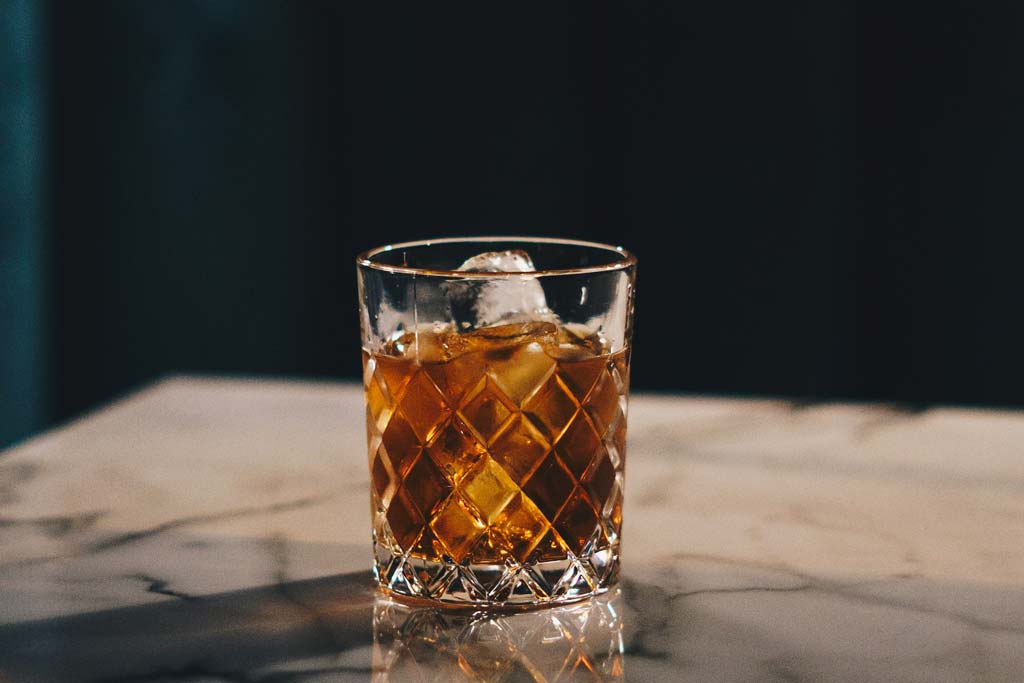
Are all single malts peated?
No, not all single malts are peated. Depending on the distillery and the whisky they’re making, peat isn’t always necessarily used during the malting process. Some distilleries avoid peat altogether, whilst others occasionally or permanently use it for making their single malts.
Traditionally, peat was used as a fuel source to dry the malt during whisky-making. This is what imparts its flavour into the whisky and therefore makes it designated as ‘peated’. Nowadays, however, many distilleries use alternative non-peated sources of heat such as electricity or natural gas. Some just simply air-dry their barley during malting which imparts no peaty flavours in the single malt being made.
How do you drink peated whisky?
Like all whisky, peated whisky is best enjoyed slowly. Peatiness can take a while to come through, especially if it’s initially masked by smokiness which is common amongst peated whiskies. Take your time to observe the colour, the smell, the taste and the finish. Starting neat, you may wish to incrementally add a little water to your dram until you find your preferred ‘sweet spot’.
If you live in a hot climate, peated whiskies can be enjoyed chilled. To do this, opt for a large single cube of ice to slow the melting. Alternatively, whisky rocks are a good alternative to ice as they won’t dilute your dram.
Peaty whiskies can be used in cocktails to elevate their flavour. For example, you could mix a peated whisky with sweet vermouth and orange bitters to make a Peaty Manhattan. Alternatively, you could use a peated whisky in a Whisky Sour variation with egg white, lemon juice and sugar.
By using heavily peated whisky in cocktails, you can bring out the smoky and peaty flavours which can be enjoyed by whisky enthusiasts and beginners alike.
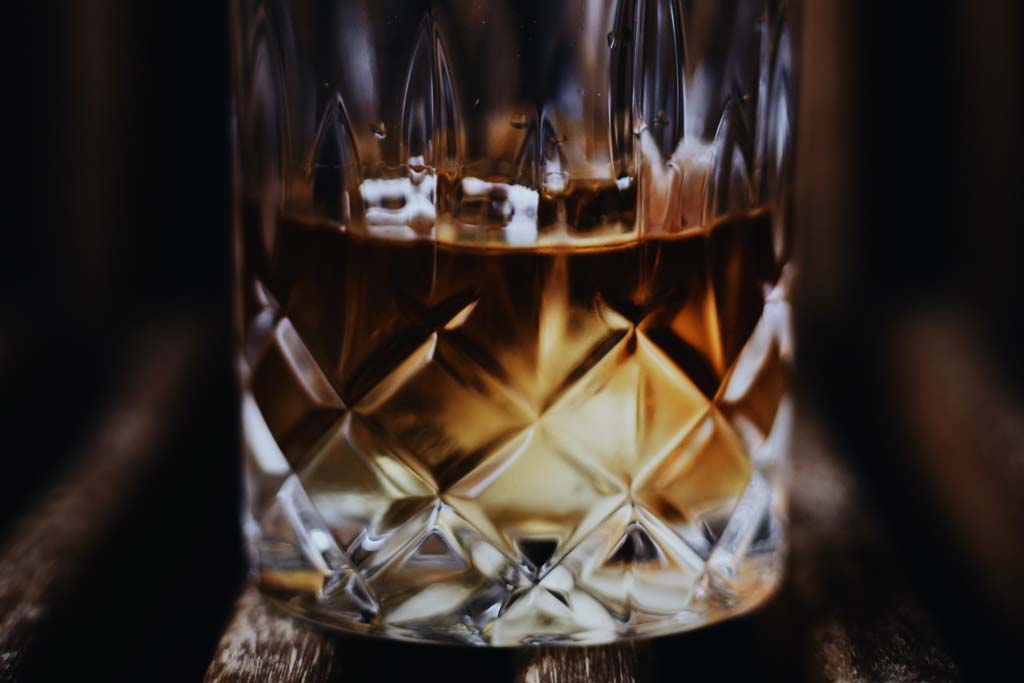
Is Irish whiskey peated?
Yes, some Irish whiskey is peated. Peat is used by a few Irish distilleries to impart additional flavour to their whiskey during the malting process. The most notable examples are ‘Connemara’ from Cooley distillery in County Louth and Teeling Whiskey’s ‘Blackpitts’. These are some of very few peated single-malt Irish whiskeys, both of which have their own unique peated expressions.
In addition to these two distilleries, there are other smaller independent producers who also use peat in their whisky-making processes such as Blackwater Distillery and West Cork Distillers.
What does ‘peaty’ whisky taste like?
The taste of peated whisky differs from distillery to distillery. Peaty whiskies can range from light, subtle and grassy to heavy, smoky and medicinal. It all depends on the type of peat used, the level of peating (measured in PPM), as well as how long it’s been matured for.
Lightly-peated whiskies tend to have a slight hint of smoke with earthy undertones whereas heavily-peated whiskies boast strong phenolics and intense smokiness which can sometimes overpower other notes such as sweetness or fruitiness. Peaty whiskies also often have a slightly bitter aftertaste due to the tannins released during kilning.
What is a good peaty whisky?
The best peated whiskies depend on your personal taste preferences. Some popular peaty whisky brands include Laphroaig, Ardbeg, Bruichladdich, Bowmore and Caol Ila. All of these distilleries are known for their heavily-peated expressions which range from light and grassy to heavy and smoky.
If you’re looking for something a bit more subtle then there are good Peated Blended Whiskies available such as The Peat Monster or Sheep Dip Peaty Blend. These have a light peatiness that is far less intense than single malts but still have noticeable smokiness in the flavour profile.

What is the most peated whisky?
The most peated whisky is the Octomore 8.3 from Bruichladdich Distillery. This heavily-peated single malt whisky clocks in at a whopping 309 PPM (parts per million of phenolic compounds) making it one of the smokiest, peatiest whiskies ever produced.
The Octomore 8.3 has a complex flavour profile with notes of smoked meat, leather, tobacco and dark chocolate. It’s definitely not for the faint-hearted as its intense smokiness can overpower other subtle flavours present in the whisky. However, it’s an interesting experience to try this peaty whisky if you have an acquired taste for smoky spirits.

Why is Laphroaig so peaty?
Laphroaig whisky is known for its intensely smoky and peaty flavour which has become a signature characteristic of the distillery. Peat from nearby Islay bogs is used to malt their barley, giving it a unique smokiness that sets Laphroaig apart from other whiskies.
The level of Peating (measured in PPM) can vary between different expressions but generally speaking, all Laphroaig whiskies are intensely peated and boast phenolic levels ranging from 20 to 50 PPM. This gives them an unmistakable earthy and smoky taste, as well as hints of seaweed and medicinal notes.
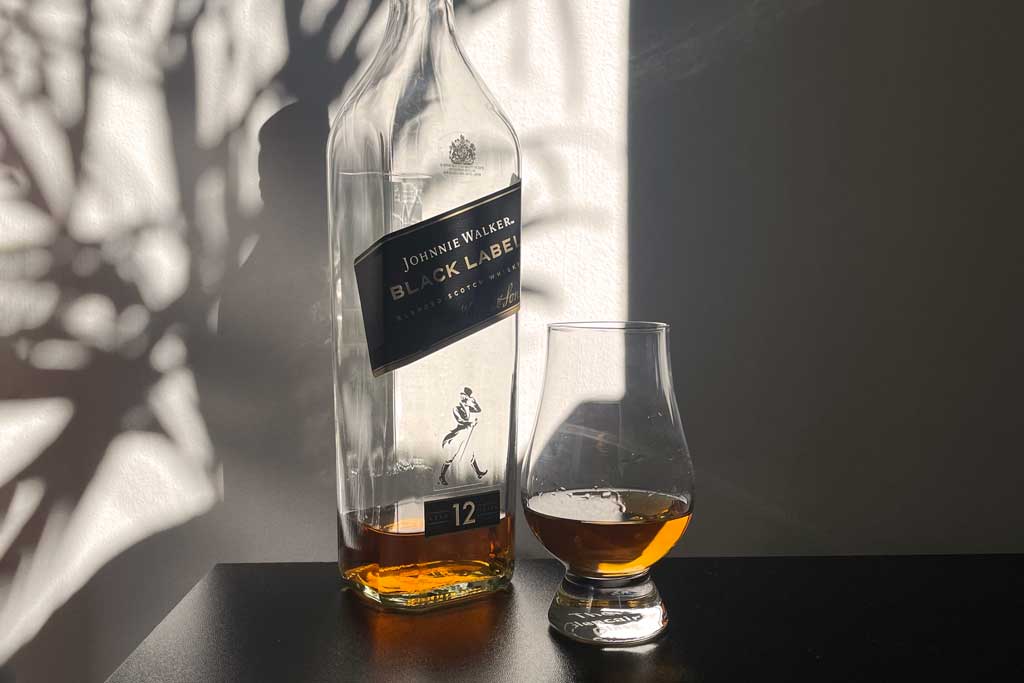
Is Johnnie Walker peaty?
Yes, Johnnie Walker use peated single malts in some of their whisky blends. They use these peated whiskies to give their blend a smokier, earthy flavour which can be enjoyed in certain expressions such as Johnnie Walker Red Label, Black Label and Double Black.
The Peating level of these whiskies is much lower than that of single malts and other heavily-peated whiskies, ranging from around 5 to 10 PPM. This gives it a subtle smoky character rather than the intense peatiness from the likes of Laphroaig or Ardbeg. The Johnnie Walker whiskies are a great option for those who want to explore whisky but are not yet ready for an intensely peated whisky experience.
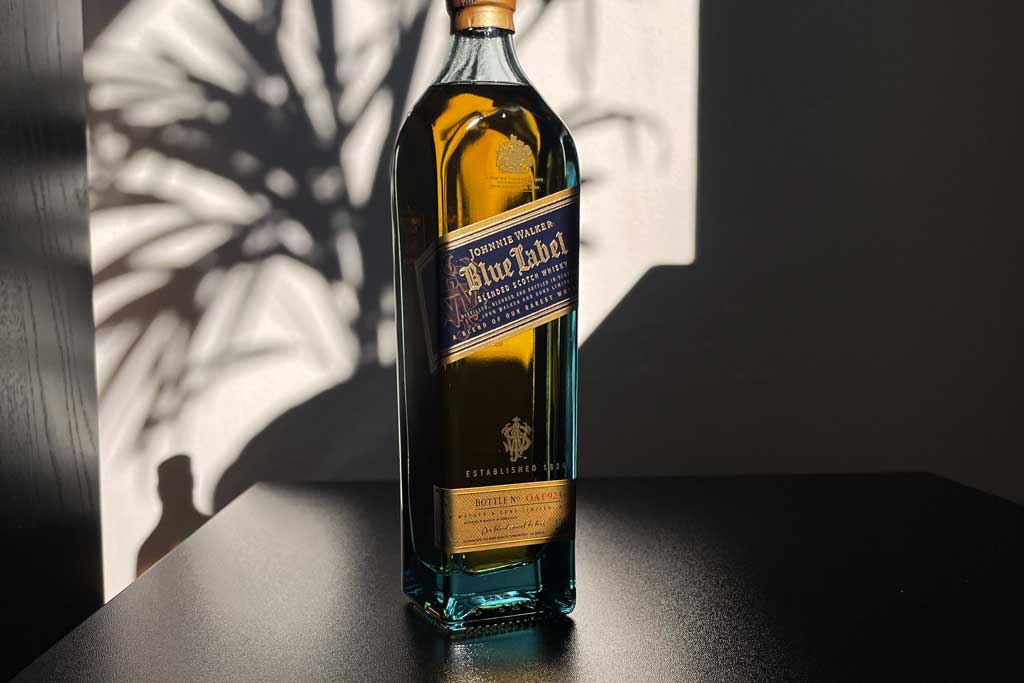
Is Blue Label peated?
Yes, the Blue Label whisky from Johnnie Walker is lightly peated. Positioned at the top end of the core Johnnie Walker range, this exquisite blend contains peated single malts from Islay as well as other Speyside and Highland distilleries. Blue Label has a smoky, earthy flavour but with a light body and sweet aftertaste. The Blue Label whisky also has notes of hazelnut, sherry and dark chocolate.
Is Glenfiddich peaty?
Glenfiddich 12-year-old, the most popular of their range, is famously unpeated. It has a sweet, fruity and floral flavour profile with subtle spice notes. The Peating level of this whisky is 0 PPM which means there are no phenolic compounds detected in the whisky.
However, Glenfiddich does produce a heavily-peated expression called Caoran Reserve which clocks in at a subtle 8 PPM. This whisky boasts subdued smoky aromas with mild sweetness and hints of oak, caramel and dried fruit. It’s an interesting contrast to their light and fruity 12 year old expression but still has all the classic characteristics you’d expect from a Glenfiddich whisky.
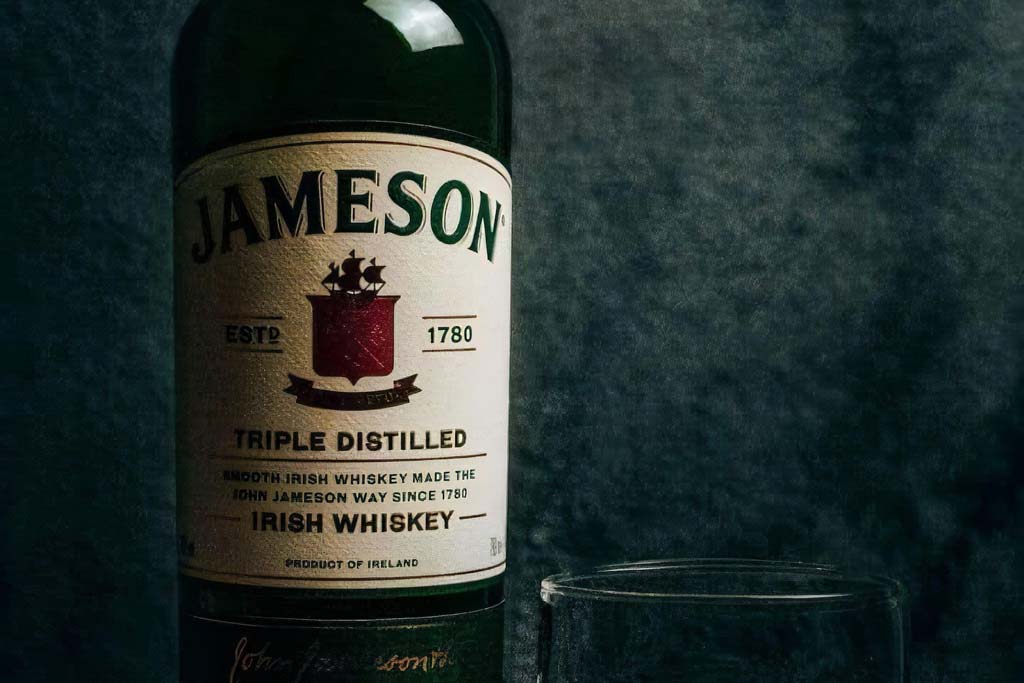
Is Jameson peated whiskey?
No, Jameson Irish whiskey isn’t peated. They produce several different expressions which range from light and sweet to full-bodied and smoky. They use malted and unmalted barley to make their whiskey which is dried using natural gas instead of peat. Subsequently, none of their whiskies are peated as they don’t use peat in the malting process.
Is all Scotch Whisky peated?
No, not all Scottish whisky is peated. Peat is used in only some parts of Scotland, mainly on the islands and the west coast. Peated whiskies are mainly produced by distilleries located in Islay and on the mainland, such as Campbeltown and Speyside.
The Peating level can vary greatly between different expressions and regions, with some being lightly peated whilst others can be intensely smoky. As a result, not all Scotch whisky has to be peated for it to be considered good or even authentic. There are plenty of non-peated Scotch whiskies out there that still have the classic characteristics of a great whisky.
Is Chivas Regal peated?
No, Chivas Regal whisky is not peated. Peat is not used in the malting process, so the Peating level for all Chivas Regal whiskies is 0 PPM. As a result, these whiskies have more of a sweet and fruity flavour profile with subtle hints of vanilla and honeyed oak.
Despite being unpeated, Chivas Regal still boasts classic Scotch whisky characteristics including dried fruits, citrus notes and delicate smoky aromas which makes it an ideal whisky for those who want to explore Scotch whisky without having to worry about a peaty finish.
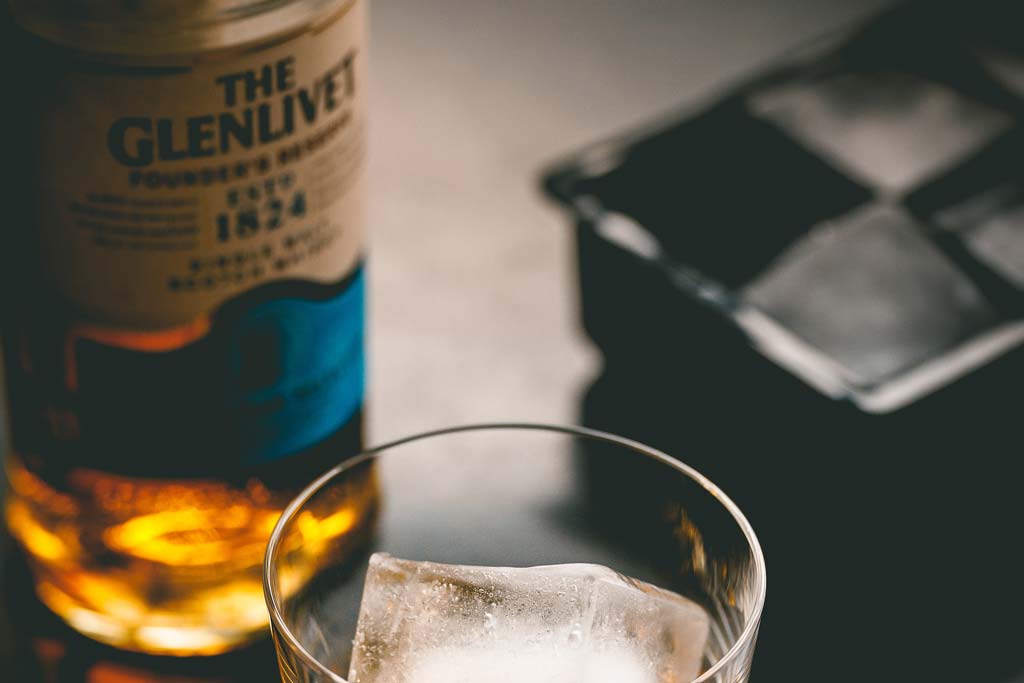
Is Glenlivet a peaty whisky?
No, Glenlivet whisky is not peated. Peat is not used in the malting process at Glenlivet as they prefer to use warm air to dry their barely during malting for a more natural, clean taste. For example, the Glenlivet 12 whisky has a fruity flavour profile with notes of apricot and pineapple. The palate is buttery and vanilla-rich, though still producing fruity notes from the nose. The finish lingers with a soft oaky spice and malt with a faint hint of apples.
Conclusion
Across the northern hemisphere, peat has been burned for centuries as an ancient fuel source which was commonly used in Scotland to dry malted barley, imparting an earthy and smoky flavour to the whisky.
Depending on the distillery, peatiness can range from light and grassy to heavy and smoky, depending on the grain’s exposure to the peat smoke during kilning. For whisky fans around the world, peatiness can be a divisive flavour profile – some find it too medicinal whilst others relish in the earthy organic notes. Either way, peaty whisky is a popular option amongst both novice whisky enthusiasts as well as seasoned connoisseurs alike.
If you’re looking to try a peated whisky then there are many brands available such as Laphroaig, Ardbeg, Bruichladdich, Bowmore and Caol Ila. Ultimately, the best peated whisky is up to you and your own taste preferences. So why not try a few whiskies and find out which one suits you best?
We hope that this article has given you a better understanding of what peated whisky is, how it’s made and where it comes from. So, why not give it a go yourself? If peatiness doesn’t suit your palate, you can always divert and make some seriously tasty cocktails. Either way, we guarantee you won’t be disappointed.


